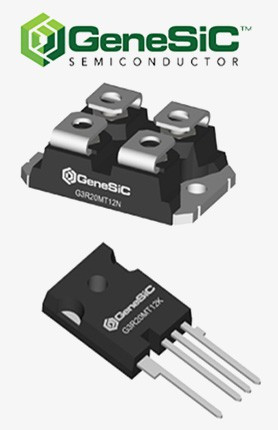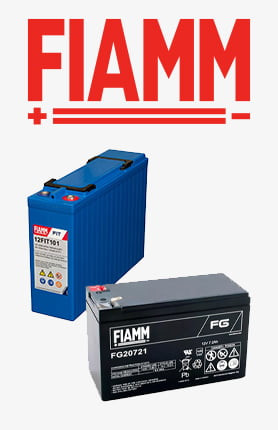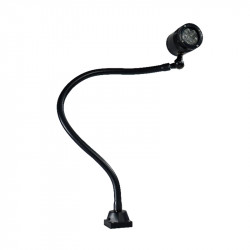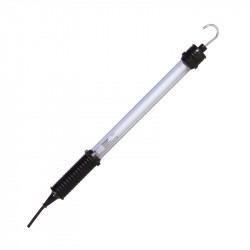trebuie să fii logat
-
întoarce-teX
-
Componente
-
-
Category
-
Semiconductori
- Diode
- Tiristoare
- Module izolate electric
- Punți redresoare
-
Tranzistori
- Tranzistoare | GeneSiC
- Module MOSFET SiC | Mitsubishi
- Module MOSFET SiC | STARPOWER
- Module ABB SiC MOSFET
- Module IGBT | MITSUBISHI
- Module tranzistor | MITSUBISHI
- Module MOSFET | MITSUBISHI
- Module tranzistor | ABB
- Module IGBT | POWEREX
- Module IGBT | INFINEON (EUPEC)
- Elemente semiconductoare - Carbură de siliciu (SiC)
- Accesați subcategoria
- Drivere
- Blocuri de alimentare
- Accesați subcategoria
- Traductoare electrice
-
Componente pasive (condensatori, rezistențe, siguranțe, filtre)
- Rezistori
-
Siguranţe
- Siguranţe de dimensiuni mici pentru sistemele electronice - seria ABC şi AGC
- Siguranțe tubulare cu acționare rapidă
- Siguranțe cu timp de întarziere pentru caracteristicile GL/GG și AM
- Siguranţe ultrarapide
- Siguranțe cu acționare rapidă la standarde din Marea Britanie și America
- Siguranțe cu acționare rapidă la standarde europene
- Siguranțe de tracțiune
- Siguranțe de înaltă tensiune
- Accesați subcategoria
-
Condensatori
- Condensatoare pentru motoare
- Condensatori electrolitici
- Condensatori snubbers
- Condensatori de putere
- Condensatoare pentru circuite de curent continuu DC
- Condensatoare de putere reactivă
- Condensatoare de înaltă tensiune
- Condensatoare pentru încălzirea prin inducţie
- Condensatoare de impuls
- Condensatoare DC LINK
- Condensatoare pentru circuite AC/DC
- Accesați subcategoria
- Filtre EMI
- Supercapacitori
-
Protecție la supratensiune
- Protecție la supratensiune pentru aplicații coaxiale
- Protecție la supratensiune pentru sistemele de supraveghere video
- Protecție la supratensiune pentru cablurile de alimentare
- Limitatoare pentru LED-uri
- Limitatoare de supraveghere pentru panourile solare
- Protecția sistemului de cântărire
- Protecție la supratensiune pentru Fieldbus
- Accesați subcategoria
- Accesați subcategoria
-
Relee şi contactoare
- Teoria releelor și a contactoarelor
- Relee semiconductoare AC 3-faze
- Relee semiconductoare DC
- Controlere, sisteme de control si accesorii
- Soft start si relee reversibile
- Relee electromecanice
- Contactoare
- Întrerupătoare rotative
-
Relee semiconductoare AC monofazate
- Relee semiconductoare cu o singură fază, seria 1 D2425 | D2450
- Relee în stare solidă monofazate, seria CWA și CWD
- Relee în stare solidă monofazate, seria CMRA I CMRD
- Relee semiconductoare monofazate, seria PS
- Relee semiconductoare duble și quad, AC seria D24 D, TD24 Q, H12D48 D
- Relee monofazate serie gn
- Relee cu stare monofazată din seria Ckr
- Relee de curent alternativ monofazate pentru SERIA ERDA ȘI ERAA
- Relee monofazate 150A AC
- Relee duble semiconductoare integrate cu o radiator din șină DIN
- Accesați subcategoria
- Relee semiconductoare monofazate pentru PCB de curent alternativ
- Relee de interfaţă
- Accesați subcategoria
- Componente inductive
- Radiatoare, varistoare, protectie termica
- Ventilatoare
- Aer condiţionat, accesorii carcase industriale, Instalatii de racire
-
Baterii, încărcătoare, surse de alimentare tampon și invertoare
- Acumulatoare, încărcătoare - descriere teoretică
- Baterii cu ioni de litiu. Baterii standard. Sistem de gestionare a bateriei (BMS)
- Acumulatoare
- Încărcătoare de baterii și accesorii
- Surse de alimentare UPS și tampon
- Convertoare și accesorii pentru panouri fotovoltaice
- Stocare a energiei
- Celule de combustibil
- Baterii cu ioni de litiu
- Accesați subcategoria
-
Automatizări
- Futaba Drone Parts
- Limita de switch-uri, switch-uri micro
- Traductoare de senzori
- Pirometre
- Contoare, Relee, Indicatoare de panou
- Dispozitive de protecție industriale
- Semnalizări luminoase şi acustice
- Camera de imagistică termică
- Afișaj LED
- Echipamente de control
-
Dispozitive de înregistrare
- Înregistrator temparatură cu bandă şi indicatoare digitale de înregistrare - AL3000
- Microprocesoare, înregistrator cu ecran LCD seria KR2000
- Înregistrator KR5000
- Contorul cu funcţia de înregistrare de umiditate şi temperatură HN-CH
- Materiale consumabile pentru Înregistratoare
- Compact înregistrator grafic 71VR1
- Înregistrator KR 3000
- Înregistrator PC seria R1M
- Înregistrator PC seria R2M
- Înregistrator PC, 12 intrări izolate - RZMS
- Înregistrator PC, USB, 12 intrări izolate - RZUS
- Accesați subcategoria
- Accesați subcategoria
-
Cabluri, fire Litz, furtunuri din material plastic, conexiuni flexibile
- Fire
- Fire Litz
-
Cabluri pentru aplicaţii extreme
- Cabluri de extensie şi compensare
- Cabluri de Thermocouple
- Cabluri de conectare pentru senzori PT
- Conductor multiplu cu fire de la temp. -60C la +1400C
- Cabluri de medie tensiune
- Fire de aprindere
- Cabluri de încalzire
- Conductor singur pt. cabluri cu temp. -60C la +450C
- Cabluri pentru calea ferată
- Cabluri de încălzire Ex
- Accesați subcategoria
- Tuburi de protecție
-
Cabluri împletite
- Cabluri plate - împletite
- Cabluri - panglica rotund
- Cabluri - panglică-plat foarte flexibil
- Cabluri panglică-rotund foarte flexibil
- Împletituri de cupru cilindrice
- Împletituri de cupru cilindrice cu protecţie
- Conexiuni flexibile de împământare
- Împletituri cilindrice din oțel galvanizat inoxidabil
- Împletituri de cupru izolate PCV - temperatura până la 85 C
- Împletituri plate din aluminiu
- Set de joncţiune - tuburi și împletituri
- Accesați subcategoria
- Echipamente de tracțiune
- Terminale pentru cablu
- Bare flexibile izolate pentru autobuz
- Bare flexibile multistrat de autobuz
- Sisteme de cablare (PESZLE)
- Furtunuri
- Accesați subcategoria
- Vezi toate categoriile
-
Semiconductori
-
-
- Furnizori
-
Aplicații
- Automatizare HVAC
- Automatizare industriala
- Automatizare industriala
- Componente pentru atmosfere potențial explozive (EX)
- Dispozitive industriale de protecție
- Echipamente pentru dulapuri de distribuție, control și telecomunicații
- Energy bank
- Încălzire prin inducție
- Mașini de sudat și mașini de sudat
- Mașini pentru termoformarea materialelor plastice
- Mașini pentru uscarea și prelucrarea lemnului
- Mașini-unelte CNC
- Măsurarea și reglarea temperaturii
- Măsurarea și reglarea temperaturii
- Minerit, metalurgie și fondare
- Motoare și transformatoare
- Surse de alimentare (UPS) și sisteme de redresare
- Tipărire
- Tracțiune de tramvai și cale ferată
- Unități de curent alternativ și continuu (invertoare)
-
Instalare
-
-
Inductori
-
-
Dispozitive de inducție
-
-
https://www.dacpol.eu/pl/naprawy-i-modernizacje
-
-
Serviciu
-
- Kontakt
- Zobacz wszystkie kategorie
Light technologies in industry

Proper industrial lighting is one of the most important elements of production halls, offices, storage houses, and machine workplaces. It's an addition to natural light and allows for longer work, implementation of shift work, and protects health and eyesight of workers.
The choice of a right industrial lighting requires to consider various crucial factors e.g. environmental conditions, level of natural light, type of equipment, financial needs, goals of the company, and the type of performed work.
Industrial lighting, except brightening production halls or storages, also includes additional lighting such as evacuation lights, external or building lighting, as well as lights for tests or particular production processes. Proper lighting increases work effectiveness, decreases eye fatigue and improves workers' wellbeing.
Benefits of properly chosen industrial lighting
Industrial lighting significantly influences workers' well being, motivation and focus. Depending on what we want to achieve and that's the profile of the workshop, various types of lights can create different feelings - cold light motivates, warm relaxes, and improperly chosen light e.g. its intensiveness, can increase fatigue and disaffection.
Other benefits of proper lighting are:
- Energy-consumption and safety of industrial lights
- saving on maintenance costs,
- people, machine and products' safety,
- limiting fatigue and increasing work effectiveness, focus, awareness,
- prevents circadian rhythm disruptions,
- decreases numbers of injuries in the workshop.
Energy-consumption and safety of industrial lights
In huge, around-the-clock storages and production halls, there might be a significant problem with lighting and maintenance costs in such energy-consuming workshops.
There are a few methods for limiting these costs:
- Energy-efficient lamps;
- Light control systems - automating switching off in empty rooms or adjusting the intensivity to the natural light; fading systems and timers;
- Setting proper temperatures in the workshop;
- Using automatic and durable lights.
Using lights in industrial conditions includes issues such as dust and dirt covering lamp enclosures. Depending on a sector type, particles of oils, cooling liquids, file dusts, sparks, or grease can occur. Thus, to ensure safety and durability of lamps, it's important to maintain proper level of leakproofness and material type e.g. akryl glass or polycarbonate.
Lighting in an industrial hall - what else should you remember?
It i also important to consider a few other light characteristics, including:
- Time of brightening to the max level - can take a few seconds to even a few minutes.
- Restart time - some lamps after cutting off power have to cool down for a few minutes before turning them on again.
- Possibility of fading lights and adjusting their location - some types of lamps require particular work position.
- In industrial buildings there can also occur various obstacles for light flow.
- It is important to locate lights in a way that they don't blind workers or disrupt machine, cars or rotary devices' work, which can be affected by a stroboscopic effect - with flickering light there can be an illusion that the element is not moving, movies with a different speed or in opposite direction.
- Proper lamp location provides safe evacuation and turning off machines.
Special use industrial lighting
Proper industrial lighting is used not only for brightening huge spaces, but also small objects, positions or machines, e.g.:
- montage and machine stands,
- stands with manual quality control,
- electric panels, enclosures and robotic stands,
- monitoring of production processes,
- devices' servicing stands.
Food Industry
Choosing proper industrial light is especially important in food industry - due to the contact with food during production processes, most important aspect is to maintain the highest hygiene standards. Lamps used for the food industry should be easy to clean and disinfect, stainless, leakproof, and also resilient to strong chemicals or pressurized hot water streams.
They should also be made of uncrashable and resilient to shocks materials, to avoid falling plastic parts, glass or paint into food. Other important aspects of enclosure construction for food or chemical industry are e.g. resistance to extreme temperatures, not affecting food's color, and adjusting to work in explosion risk areas.
What is the best light source for industrial applications?
There are many light sources that are irreplaceable in particular industrial sectors and are properly adjusted to individual needs and goals of the application. They are distinguished by mostly the method of creating light, parameters, and usage intentions.
We distinguish three main light sources:
- Thermic lamps - bulbs; halogen lamps banned since 2018 in EU).
- Discharge lamps - light is created directly or indirectly due to the electric discharge in gas, steam, metal, or mix of gas and steam. E.g. fluorescent lamps and HID (high-intensity discharge).
- Semiconductor light sources - electroluminescence diodes.
It is also important to remember about checking and adjusting light parameters to the workplace or application. Basic parameters are e.g. light beam - amount of emitted light described in lm; brightness - amount of light in a given direction; intensity and lumination. Also important are characteristics such as durability, light color and taint capturing rate.
LED diodes
Semiconductor light sources are recently more commonly used in houses, commercial buildings and industry.
In LED diodes an electroluminescent effect is used, that is, emission of light waves under effect of electric current flow through semiconductor junctions.
Most important benefits of LED diodes:
- High effectiveness and intensity of light.
- Long durability even in a constant work system.
- Immediate brightening to maximum, just after switching on.
- Cooling of diodes is not required to restart the lamp.
- Possibility to fade or particular choose diodes, which should be on.
- High resilience to vibration and shocks.
- Possibility of work in low temperatures.
- Reduction of energy costs, servicing and lamp exchange.
- Decreasing harmful effect on environment ad amount of waste. LED diodes do not affect the surroundings, increased temperature and do not emit radiation.
- Increasing safety, protection of health and increasing productivity.
One of few disadvantages of LED diodes is their susceptibility to damages under effect of high temperatures, which decrease their durability and light parameters. However, they can work even in very low temperatures and maintain their parameters and durability.
LED technology used in industrial applications can be connected with smart management, e.g. with daily light intensity sensors. There is also a possibility of remote control of light systems, adjusting its brightness, work time and choosing particular diodes and places, which should be turned off or on.
Related products
Related posts
 Now available – DC/DC converters from PREMIUM
Now available – DC/DC converters from PREMIUM
 New release in DACPOL lighting for lathes – Kira covers
New release in DACPOL lighting for lathes – Kira covers






Leave a comment